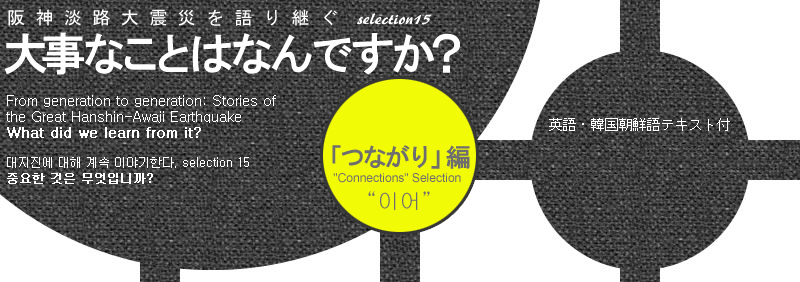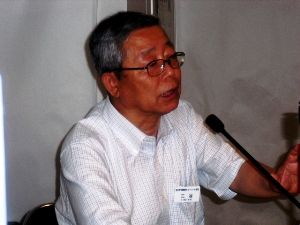A more dynamic approach than that used in Kobe needed to support Tohoku earthquake disaster victims
Yozo MITANI – Kobe City Post-disaster Industry Restoration Bureau, Director
■When the Hanshin-Awaji Earthquake disaster happened
I was in Kobe City’s Economics Bureau, Industry Promotion Division when the Hanshin-Awaji Earthquake disaster happened. I shed tears as I walked around shipbuilding yards, chemical and iron works factories. People had lost their homes and factories and couldn’t remain in Nagata (Ward). I began work on trying to secure places of work so that people would return and work here.
■Building temporary factories
Although these were temporary factories, preventing trouble caused by noise and smells etc, had to be taken into consideration. In the first group, we were able to hand over the keys to the factories in April to people from Nagata. I think it would have been better if we had been able to hand them over earlier. The chance of winning the lottery to obtain a factory was 15 to 1. There just weren’t enough temporary factories. To ensure the lottery was fair, police were in attendance and the lottery was conducted openly. People who won the right to obtain a factory cried with happiness.
■Communities involved in labor and work division in the ‘chemical shoe industry’ in Nagata
Since there was no land in Nagata Ward, factories were built in neighboring Hyogo Ward. The ‘chemical shoe industry’ is really an amazing industry. There are people in the communities each having his/her role to play: doing work in the home, cutting, sewing, preparing materials, etc. If one is missing, the system stops working.
■The results ….
To be honest, I really haven’t felt the results. If the economic situation had been good, business owners might have moved from temporary factories for disaster victims to rental factories, and on to owning their own factory. Unfortunately, 1995 was right in the middle of the ‘lost decade’ (post-bubble economy depression), and after that came the ‘Lehman Shock’ as well as an increasing share of the shoe industry being taken by China. Although we can’t say things have returned to what they were, both the industry and the local governments did what could be done. Since business is swayed by economic conditions, the timing for Kobe couldn’t have been worse.
There are still vacant plots north of JR Shin Nagata Station. And although the area has become quite beautiful, it doesn’t have its former vitality.
■Entering the disaster-hit area in Iwate
Until now, I have been to mainly Iwate Prefecture for a period of 2 weeks. The total area of each village is a little larger than Kobe. However, everything was torn up by the roots: people, household belongings, boats, fishing nets. Nothing was left.
■Passing on how to think about things and how to proceed
In Iwate, the value of its produce comes from fishing and processing fish. Now, this has gone. More than us going there and trying to do something, going there to help the people how to think about things and how to proceed is important.
■Getting ready to start fishing for salmon in September
Fishing for salmon begins in September. If there are no boats, you can’t fish. In Ishinomaki, the harbor sank and gets overflowed, so the harbor needs to be repaired or restored. Ideally, it would be best if everything could be done at once, but since that is impossible, a decision must be made as to what has to be done first and emergency measures formed.
■Restore the livelihood of the victims
Although there are some people who say, ‘Since I have lost my boat, I’m giving up fishing’, but most people say, ‘I want to fish again.’ When the earthquake hit Nagata, only a few people said they wanted to quite their chemical shoe business or ironwork business, so I suppose the situation is much the same.
Each port is providing subsistence work in clearing the ports of rubble and debris. However, what should be done is getting the fishermen to return their true occupation of fishing. Even if they secure a place to live, they need money. I believe it is necessary to restore the local people’s livelihood.
■General mobilization of wisdom to create dynamic policies
When talking about economics, we hear the same things as when the Hanshin-Awaji earthquake disaster happened. Using the experiences of that time, the national government, prefectures, and local authorities need a more dynamic approach to support the disaster victims.
It is difficult to conceive or imagine what the Tonankai-Nankai Earthquake might be like. However, if you went to the Tohoku area, you would understand what it was like when a 20-meter tsunami hit. It is important to have some realistic understanding of what it can be like. It is also important to spend money in the disaster-hit area. It is important to realize that not all of the Tohoku area was destroyed. And by going to the area and spending as much as possible, is very helpful for the region.

